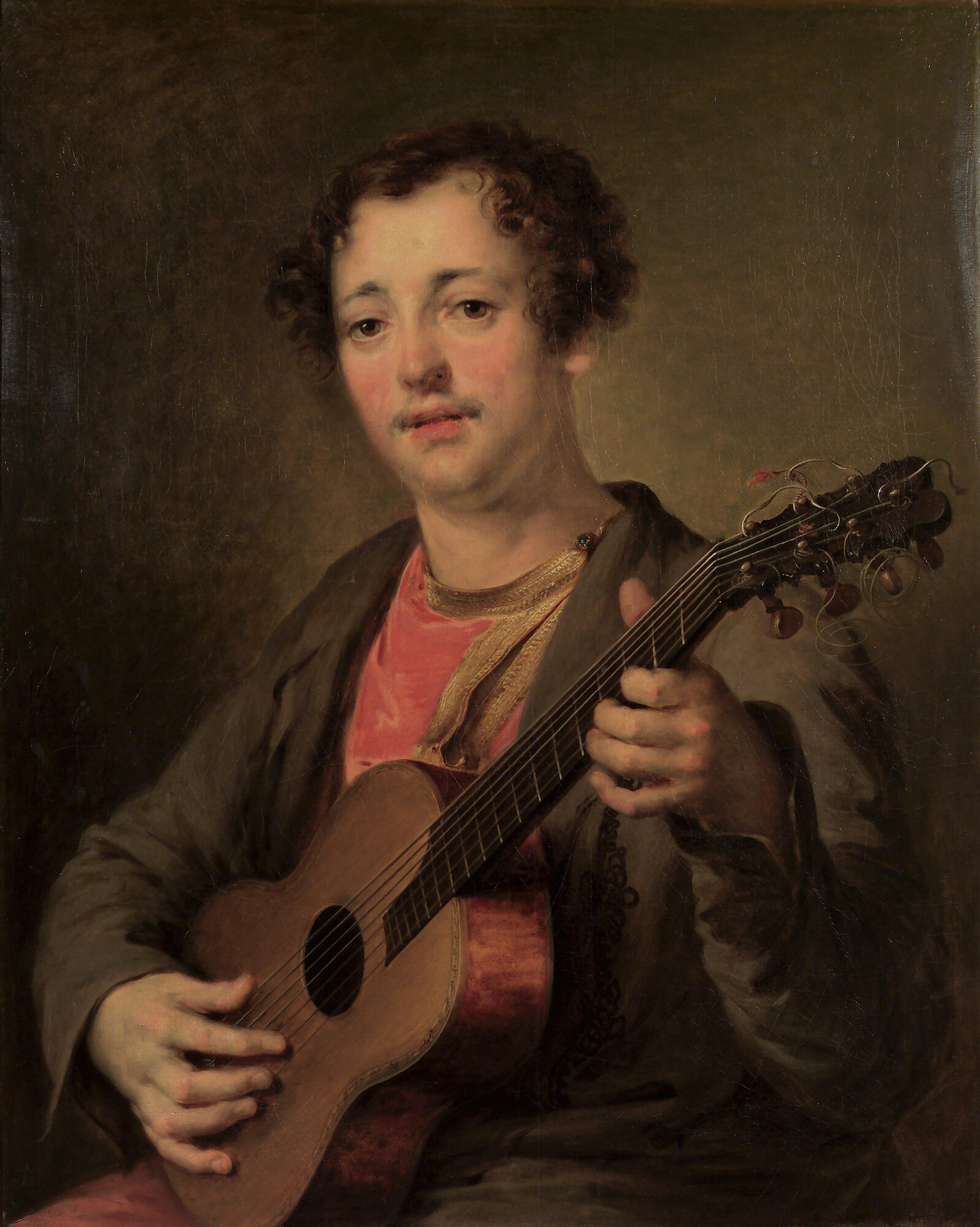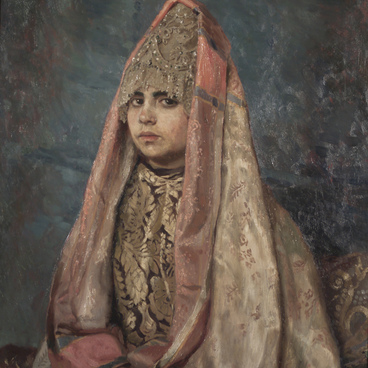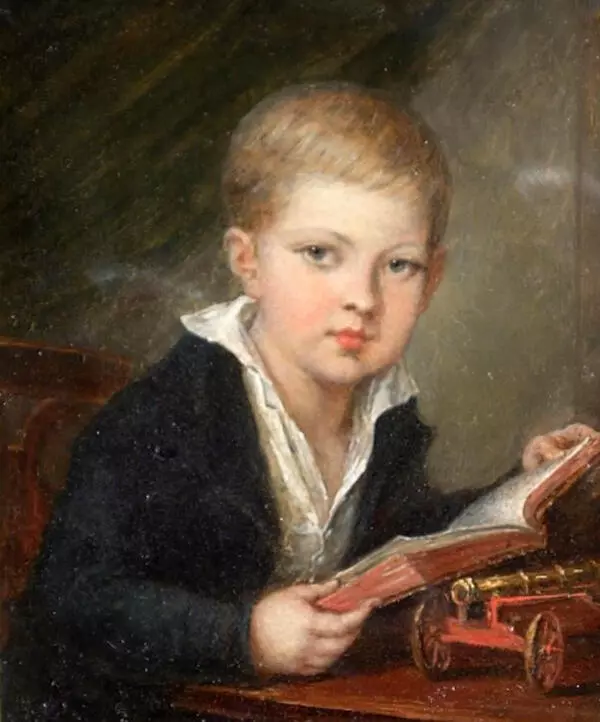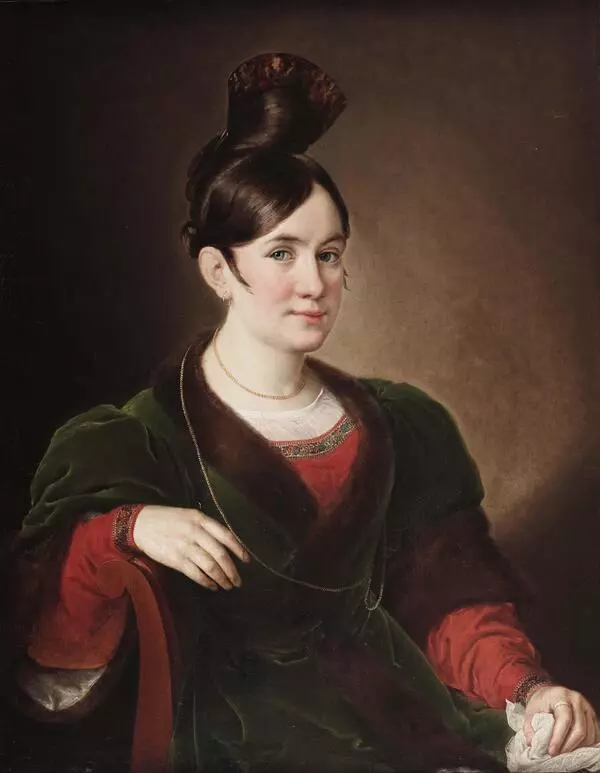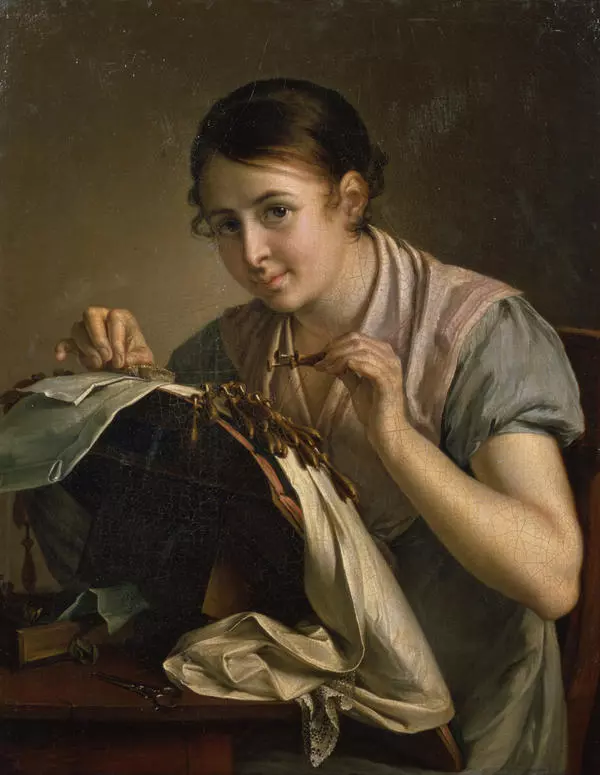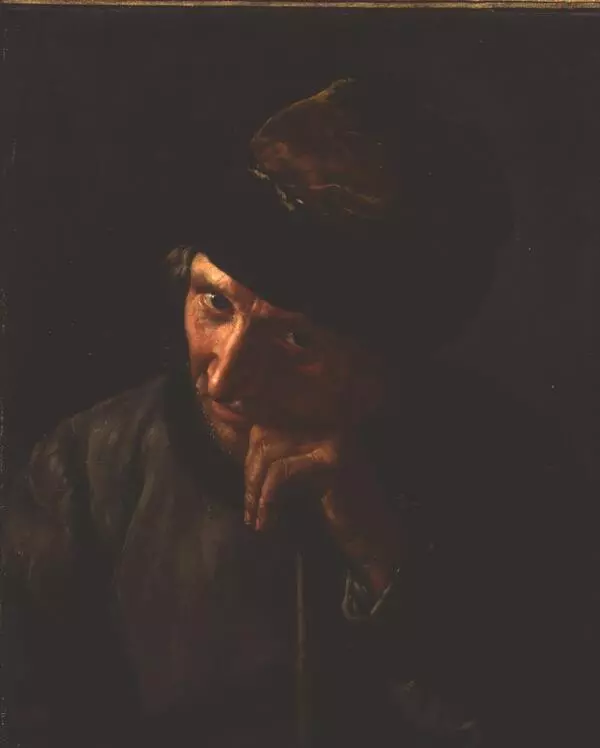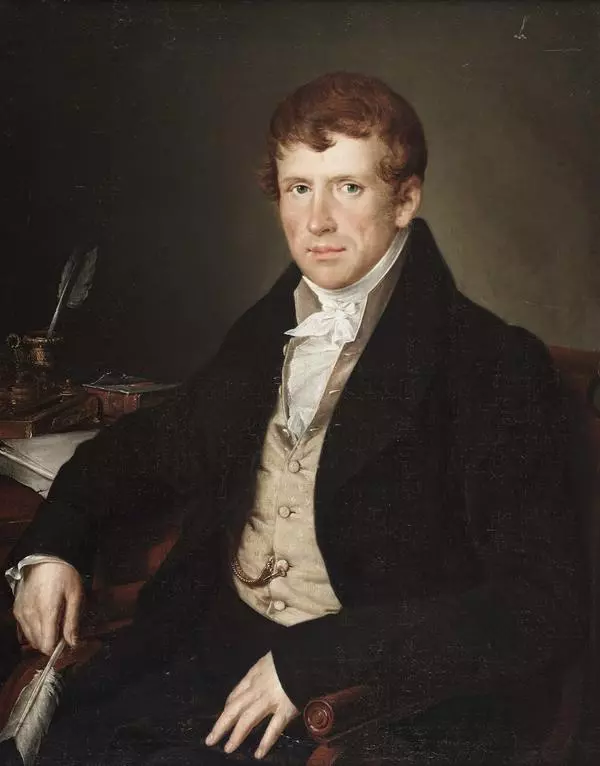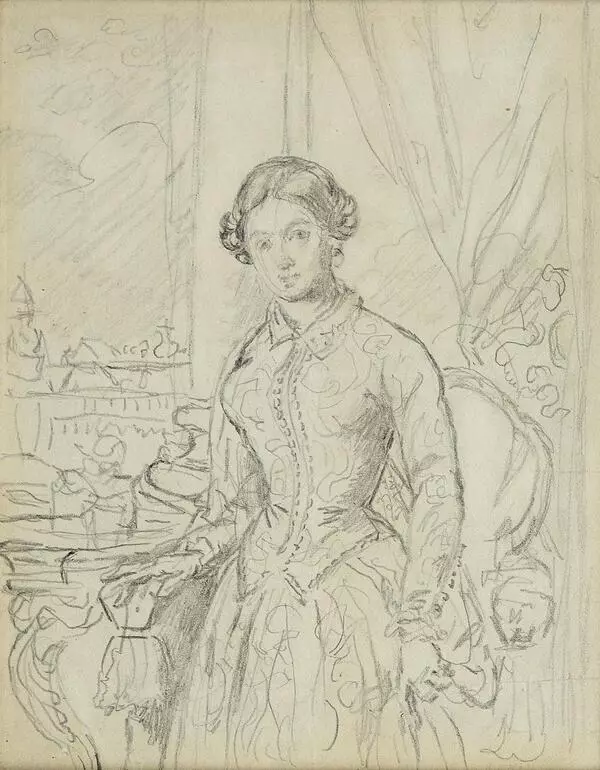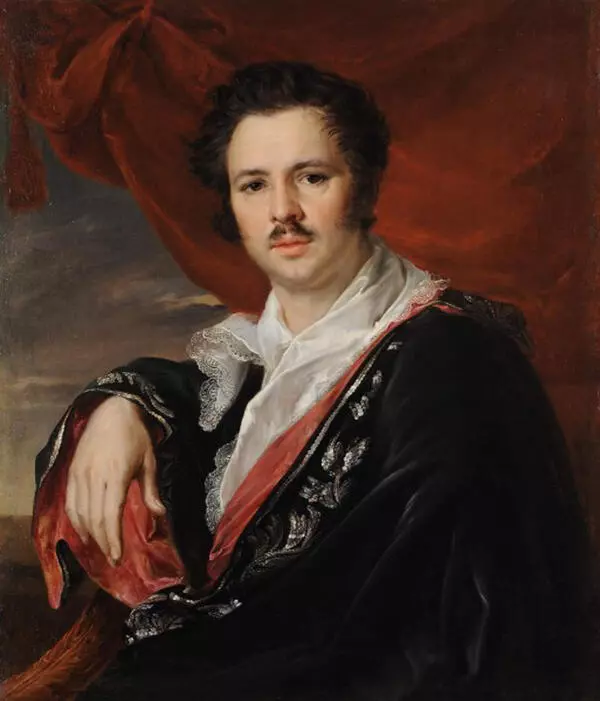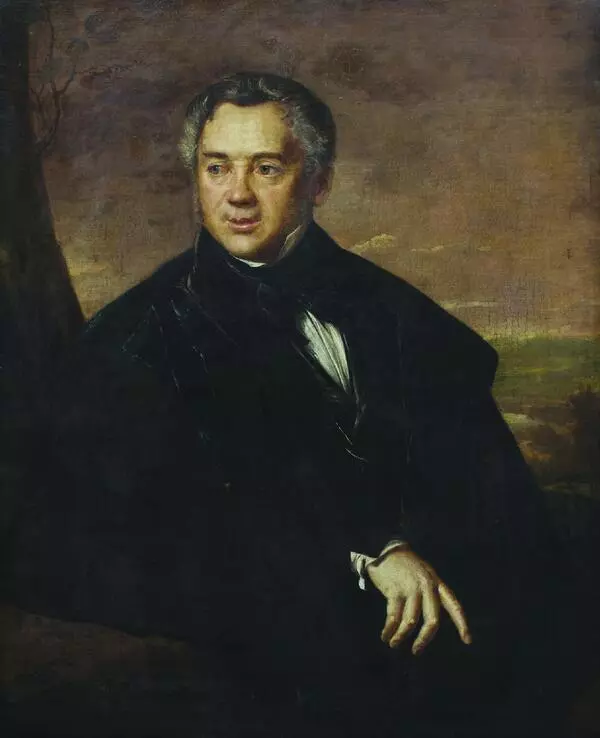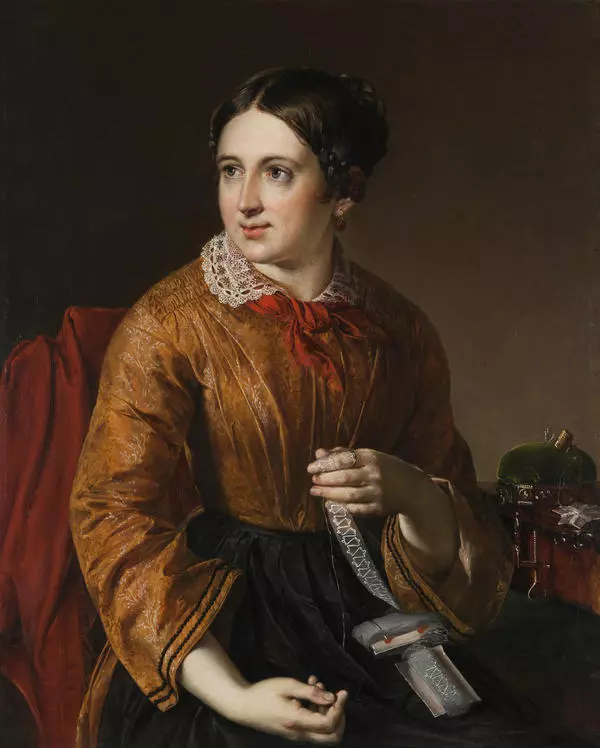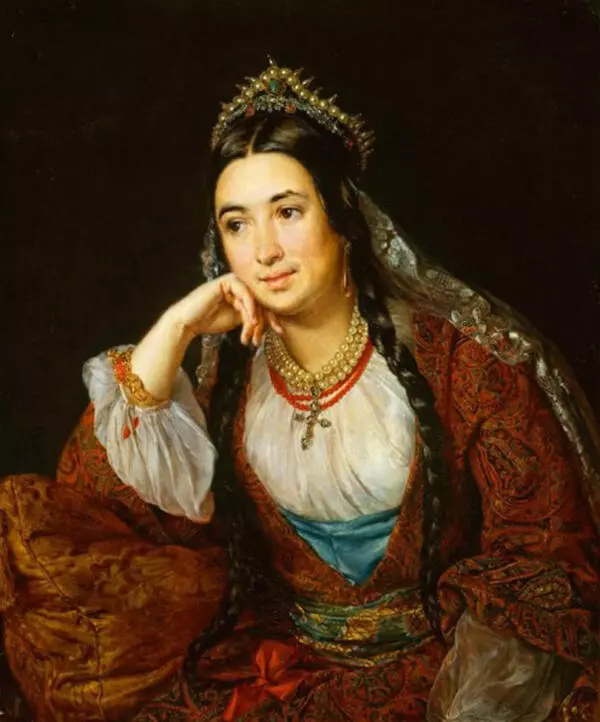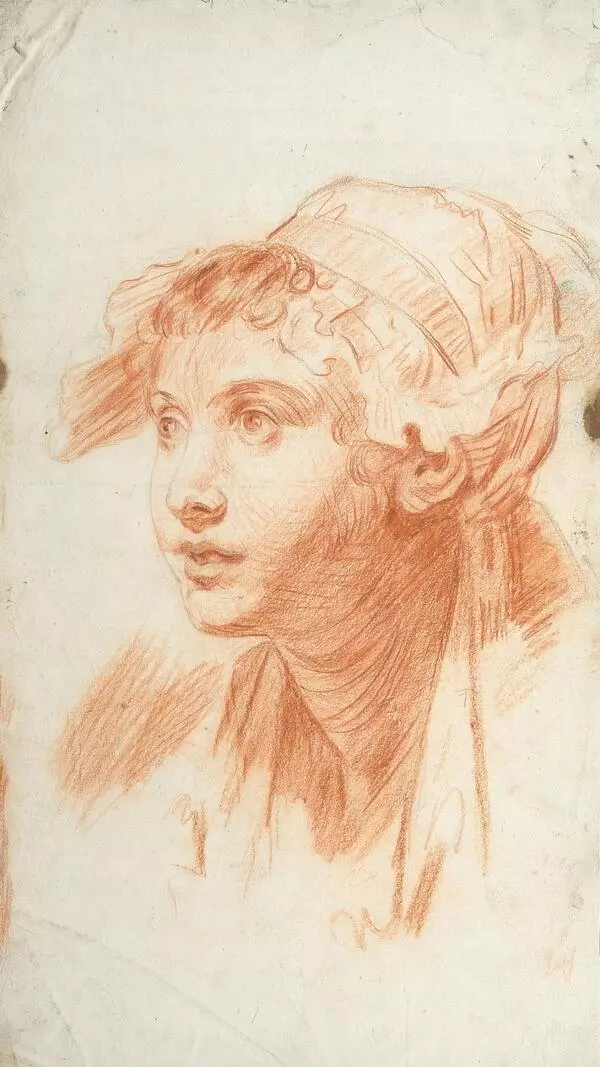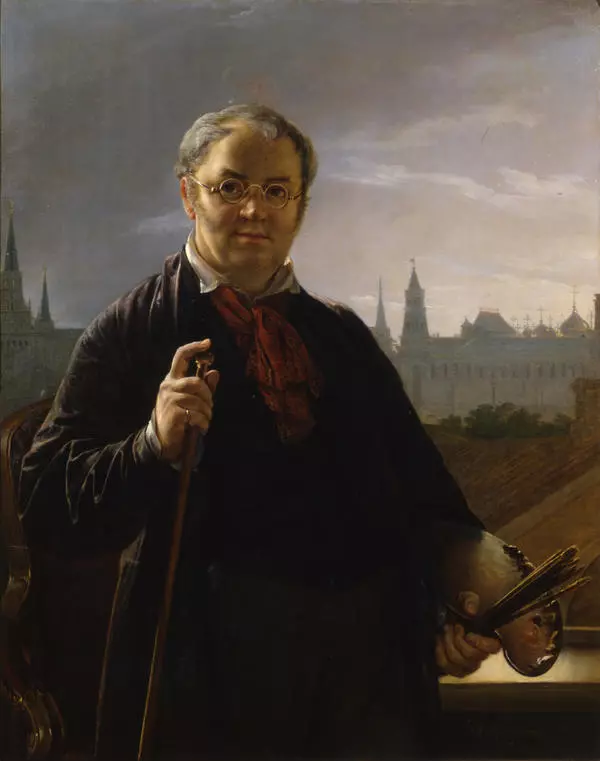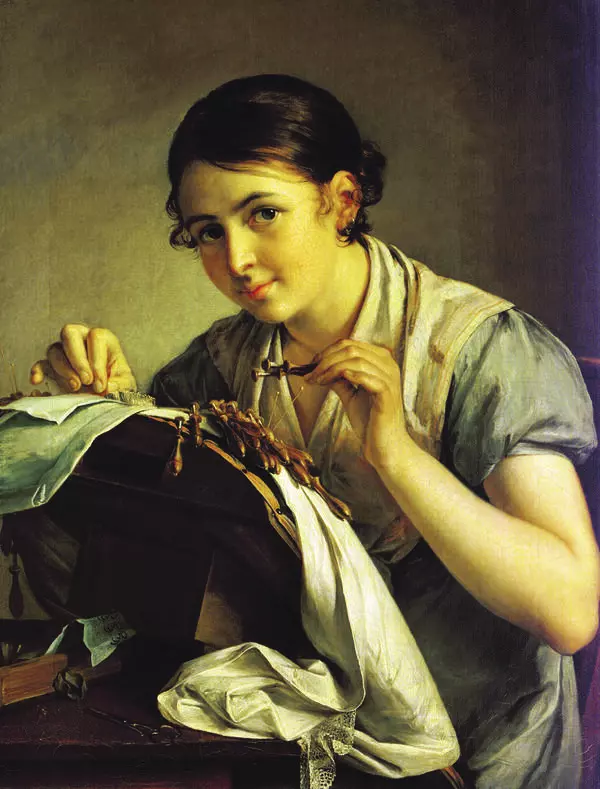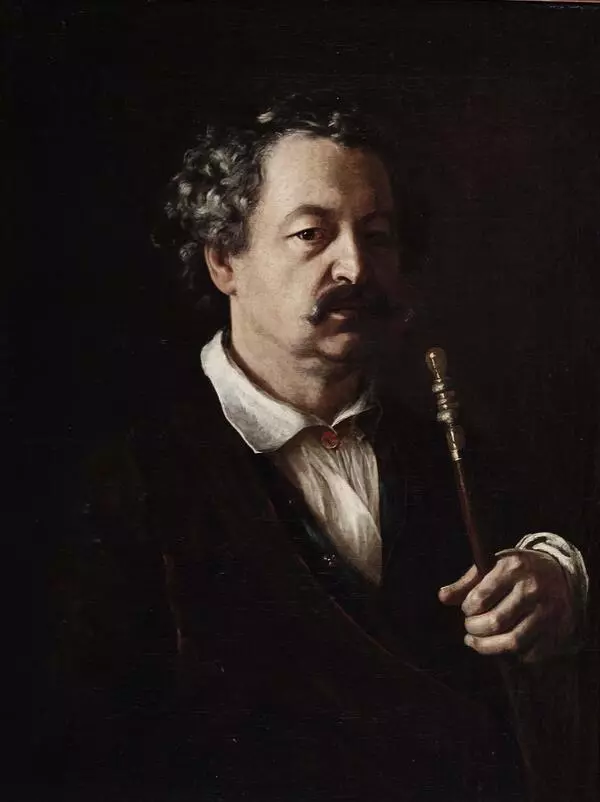Vasily Tropinin played a significant role in the development of Russian realistic art. A characteristic feature of the era in which he lived was the desire of writers and artists to show the life of the people. Tropinin knew and understood ordinary people well, since he was born in a family of serfs. For 47 years he himself remained a serf of the willful Moscow Count Morkov and was forced to fulfill his duties as a pastry chef, a clerk, a personal lackey of the count, a portrait painter of the count’s family and an icon painter, as well as a drawing teacher of the count’s children, and repairing and painting carriages. By order of his count, Tropinin had to paint a lot of custom-made portraits of dignitaries, businessmen, merchants, officials and nobles. However, throughout his entire career the artist turned to the images of ordinary people from the people. He created a special kind of genre painting, showing a person in his usual home environment. His genre paintings ‘The Lacemaker’, ‘The Gold Embroidery’, ‘The Spinner’, ‘The Guitarist’ are popular.
In the work ‘The Guitarist’, the artist focuses all attention on the person, on the transfer of his mood. The musician is depicted in a relaxed pose, he not only plays and sings, but he experiences a sensitive ballad with all his heart. This is shown by his pensive eyes, the blush on his cheeks, the half-open mouth, and quivering hands, fingering the strings of a guitar. The color scheme of the work is dominated by golden, pink tones, which convey the lyrical mood of the young man.
For the first time, Tropinin turned to the image of the ‘The Guitarist’ in the early 1820s and repeated it for 20 years. It was the heyday of Russian everyday ballad. Fashionable romances and folk songs to the accompaniment of a seven-string guitar sounded in all strata of the Russian population: in the salon, in the girl’s room, in the tavern with the coachmen.
Vasily Tropinin created about 10 versions of “The Guitarist”. These works are held in both museum and private collections.
The painting from the The Vasnetsov Brothers Art Museum is among the first ones, dating back to the early 1820s. The artist’s model is Vladimir Morkov, a well-known guitarist, composer and arranger in the 19th century, author of many pieces of music for guitar.
In the work ‘The Guitarist’, the artist focuses all attention on the person, on the transfer of his mood. The musician is depicted in a relaxed pose, he not only plays and sings, but he experiences a sensitive ballad with all his heart. This is shown by his pensive eyes, the blush on his cheeks, the half-open mouth, and quivering hands, fingering the strings of a guitar. The color scheme of the work is dominated by golden, pink tones, which convey the lyrical mood of the young man.
For the first time, Tropinin turned to the image of the ‘The Guitarist’ in the early 1820s and repeated it for 20 years. It was the heyday of Russian everyday ballad. Fashionable romances and folk songs to the accompaniment of a seven-string guitar sounded in all strata of the Russian population: in the salon, in the girl’s room, in the tavern with the coachmen.
Vasily Tropinin created about 10 versions of “The Guitarist”. These works are held in both museum and private collections.
The painting from the The Vasnetsov Brothers Art Museum is among the first ones, dating back to the early 1820s. The artist’s model is Vladimir Morkov, a well-known guitarist, composer and arranger in the 19th century, author of many pieces of music for guitar.
